Positioning strategy: be findable.
Landscape, uniques, audiences, promises, and personality — to maximize funding

KATHLEEN SOUDER
All too often, nonprofits fail to clearly determine their positioning strategy. A process that, when nailed, can sharpen everything you do — from programs to fundraising.
This lack of attention to positioning is largely a result of market conditions for nonprofits. One where the need is great, demand is high, and the biggest problem is how to develop enough supply to meet demand. Contrast this with the private sector. Brands invest heavily in positioning as companies battle for wallet share when selling sneakers, burgers, or tax preparation.
But the rules of economics, market competition, and psychology hold true no matter where you fall in the tax code. And just because you’re mission-driven doesn’t mean others aren’t competing for time, attention, and resources.
How many nonprofits stand side-by-side with nearly identical peers? How many exist to serve the same purpose or address a common issue? As your own best salesperson, you may clearly grasp the nuances of your work. But outsiders can’t readily identify a real difference, one from the other.
So what are nonprofit leaders to do? Here’s a positioning strategy guide. What it is, why it matters, and how to create one — along with some final advice and tips.
A reminder: the Fundable/Findable FrameworkTM
Every nonprofit needs tight messaging, strong storytelling, sharp visuals, and cohesive communications to attract and retain donors.
But bold brands are built from the inside out. Before you can be findable externally, you must be fundable internally. That’s why your theory of change and strategic plan must come before your positioning strategy and marketing communications.
We guide early- and growth-stage nonprofits through this process using our Fundable/Findable Framework.TM
What it is: some definitions.
Positioning strategy is the deliberate process by which your organization identifies its strengths, assesses gaps in the competitive landscape, and chooses how to present itself to audiences and enter the marketplace.
Nonprofits must generally consider positioning within two markets. The first is the beneficiary or customer population it aims to serve. And the second is the sphere that encompasses institutional funders, individual donors, peer groups, government partners, and sector thought leaders. The principles and strategies we outline here can be deployed on both fronts. Though we’ve written this post with the second audience in mind.
In the private sector, positioning is how a company can target audiences efficiently and maximize the price charged. For-profit businesses arrive at a positioning strategy by calculating:
What they’re good at + what their customers want + what their competition is/isn’t doing = POSITIONING
Just like in the private sector, social sector positioning is a tool to maximize impact while being good stewards of available resources. But of course, your customers are also donors, funders, volunteers, and supporters. So as a nonprofit or social enterprise, we have to add a dimension to the analysis:
What you’re good at + what funders will support + what other organizations aren’t doing + what the world needs = POSITIONING
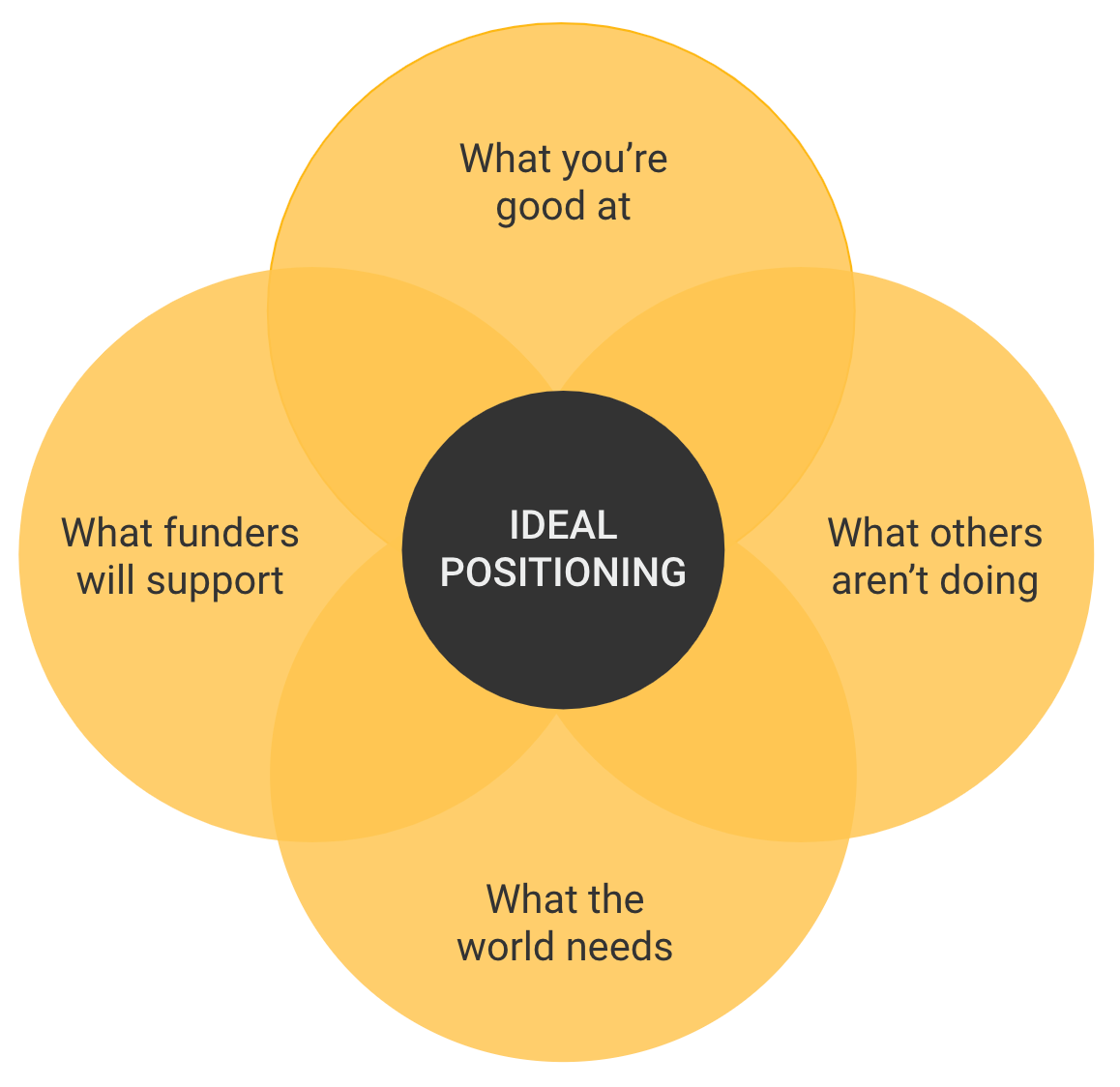
“Positioning is a deeply wasteful exercise. It’s driven by saying no more than saying yes as you decide how to proceed with courage.”
BLAIR ENNS, WIN WITHOUT PITCHING
Why it matters: income & impact.
Ultimately, good positioning strategy allows you to maximize your organization’s income and impact. It does this in three key ways:
Attract and increase funding.
Funders and donors aren’t customers, but they still want value in exchange for their investment. Which means the onus is on social ventures to stand out from the crowd. And to make a strong case for why money should be given here instead of there. Of course, philanthropic giving isn’t a zero-sum game. But your organization’s ability to garner additional donors, increase donation amounts, or win grants from foundations requires a clearly articulated — and differentiated — value proposition.
Focus and align internal teams.
Positioning strategy requires you to highlight the parts of your organization that are both unique and important externally. But the ability to tell a clear, compelling story to the external world requires razor-sharp internal clarity.
Positioning isn’t inherently an organizational performance exercise. However, if you spend time identifying the unique value you provide — a natural next step is to orient teams and internal processes towards it.
Find collaboration and partnership opportunities.
Savvy positioning emphasizes the areas of your programming that might have a highly competitive set. Which can be a good and helpful indicator of redundant programming. Or of resources that could be better spent finding collaborative partners and focusing instead on what makes you unique.

The partnership between Living Goods and Last Mile Health won the 2018 Audacious Project. Both organizations have theories of change centered around delivering healthcare in hard-to-reach locales using community health workers (CHWs). The project’s success relies, at least in part, on the overlap of experience in deploying teams of CHWs. Living Goods will supply a Smart Health app and home delivery model, while Last Mile Health’s Community Health Academy will power the workers’ education.
How to create your positioning strategy: the Mighty Ally process.
Positioning is an art, not a science. And it’s not always easy to bullseye that intersection between internal realities and the external environment.
Nailing it requires equal measures of soul-searching, research, intuition, rigorous analysis, practical experience, and creativity.
We determine positioning strategy through three big sections (landscape, positioning, personality) and 10 elements within.
It takes a couple of days in a workshop with clients. Weeks of independent research and analysis. A full insights deck. Then ultimately, a one-page blueprint at the end.
Here’s the high-level summary:
Positioning strategy elements
Decide what makes you unique: assess and compare yourself to others.
Armed with an honest evaluation of your organization and a keen understanding of your constituents, assess your competitors. Make a list of them. Then, make a list of value drivers your constituents care about. Score your competition across the spectrum of value drivers. Finally, score yourself.
What will likely emerge — among the noise — are opportunity gaps. Or value propositions your organization can fully claim. You’ll start to identify your uniques that, when combined, should elicit one compelling value proposition and strategic market position.
Here’s a fictitious example if you’re slinging burgers. Assuming you’ve already determined that your target customers care about all of these dimensions, you’d use the chart below to identify ‘vegetarian options’ and ‘table service’ as valuable elements to the market. Then possibly even decide to trumpet your unlimited fries as a way to stand out from the pack!
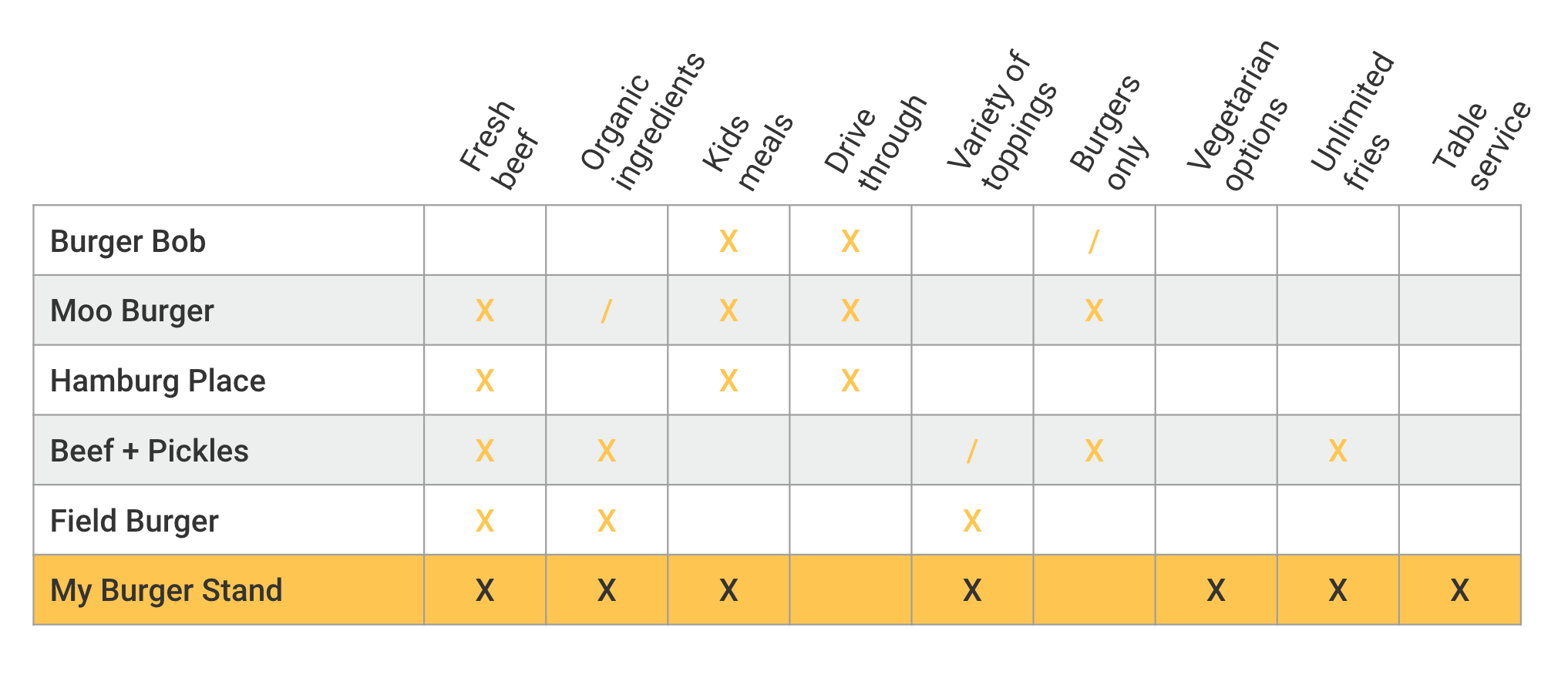
Know your audience: detail their wants and needs.
Identify your top three priority audience groups. You probably have to communicate with more than three groups of constituents. But remember, “if you try to be everything to everyone, you’re nothing to no one.” So, prioritize.
Ask yourself: Who do we most need to reach and engage to achieve our theory of change? Is it funders? Major donors? Young individual contributors? Members of the media? Fellow social ventures?
Once you identify these groups, really get to know them. Talk to them, interview them. Conduct a persona exercise, do some empathy mapping, or list things they care about. And if you don’t know, find out! Because if you don’t know what people want and need and value, you have no idea how to position yourself to appeal to them.
Now, establish a set of brand promises for each — ideally laddering up from functional promises to advantages and benefits.
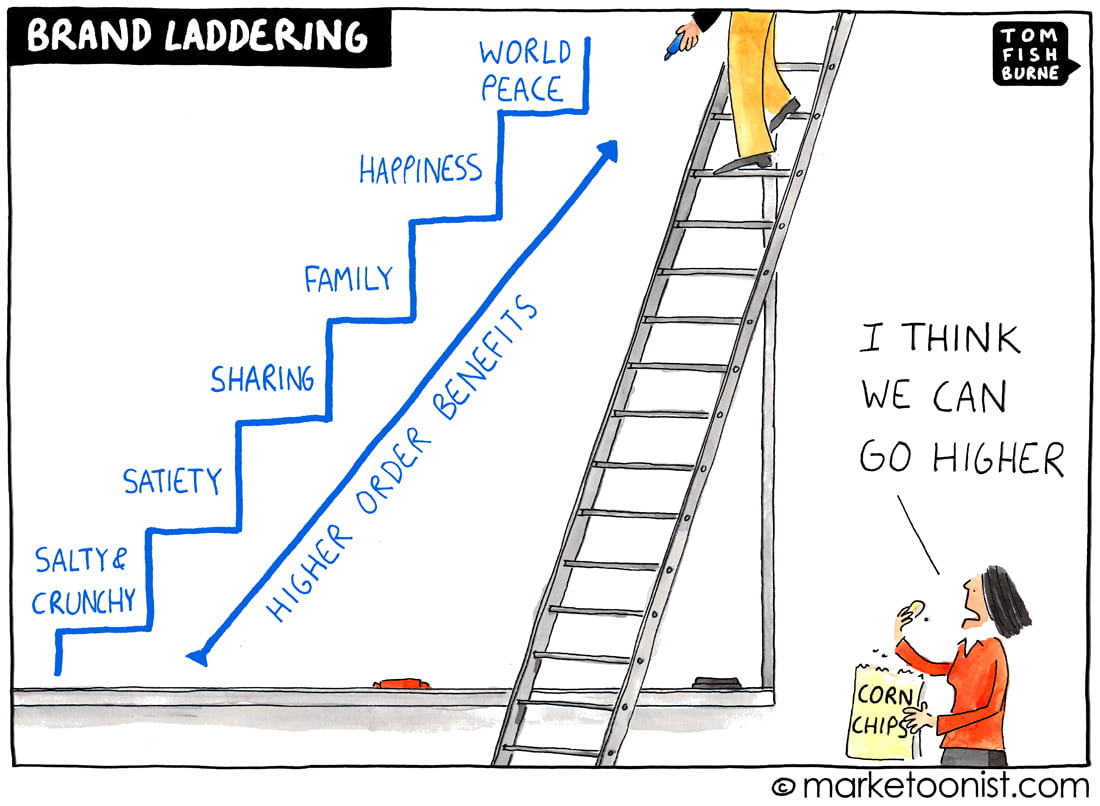
Show your brand personality: establish a visual and verbal feeling.
Brand personality refers to the personification of a brand. It’s a collection of human characteristics or traits embedded within an organization. Defining the identity and personality of your brand is crucial. If you don’t define it, some sort of personality (even the multiple variety) will come through regardless.
So it’s best to think about it now. Who do you want your brand to be?
There are several ways to determine your brand personality. Our favorite is a tool called archetype — or brand character. There are 12 brand archetypes, ranging from those conveying comfort to others creating excitement. Choosing the right archetype is essential. Brands that capture meaning and communicate that message in subtle and refined ways dominate.
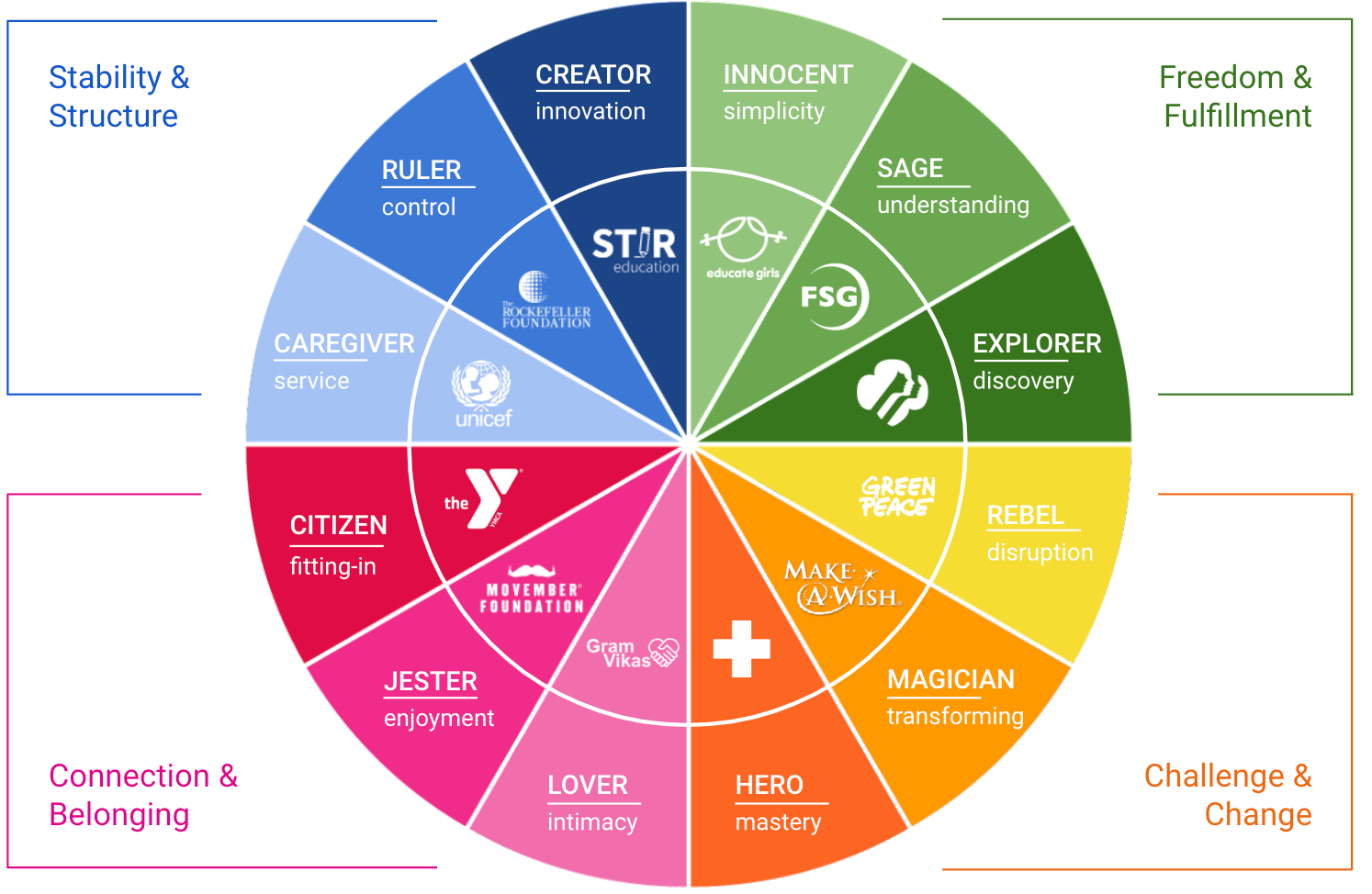
“People don’t always remember what you say or even what you do, but they always remember how you made them feel.”
MAYA ANGELOU, POET & CIVIL RIGHTS ACTIVIST
Final advice and tips.
There’s no better way to test your positioning than taking it out into the world. Learning then validating or iterating. A design-thinking methodology will allow you to respond to ever-changing constituent needs and competitor offerings. Because nothing is static. As you plant a distinct stake in the ground, still keep yourself nimble and responsive.
We’ll be perfectly clear: positioning strategy should be owned and led by the executives of every organization. It’s not just an exercise reserved for your marketing communications staff. It belongs top of mind and tip of tongue for your entire organization — not buried inside a hefty marketing plan.
What are the hallmark tests of good positioning? Besides money flowing well throughout your organization, chances are you’ll pass these three tests:
There are not many others in the space, but also not too few.
Count your competitors that provide similar services. If you have too many, your positioning probably isn’t differentiated enough. You’ll have trouble pitching a unique story to funders, powering through the noise to appeal to donors, or garnering attention from thought leaders, peers, and media.
If you have too few competitors, it likely means your value propositions are irrelevant or unneeded. Or that what you’re doing is so cutting edge you’re in an entirely different category — one of demand generation and innovation.
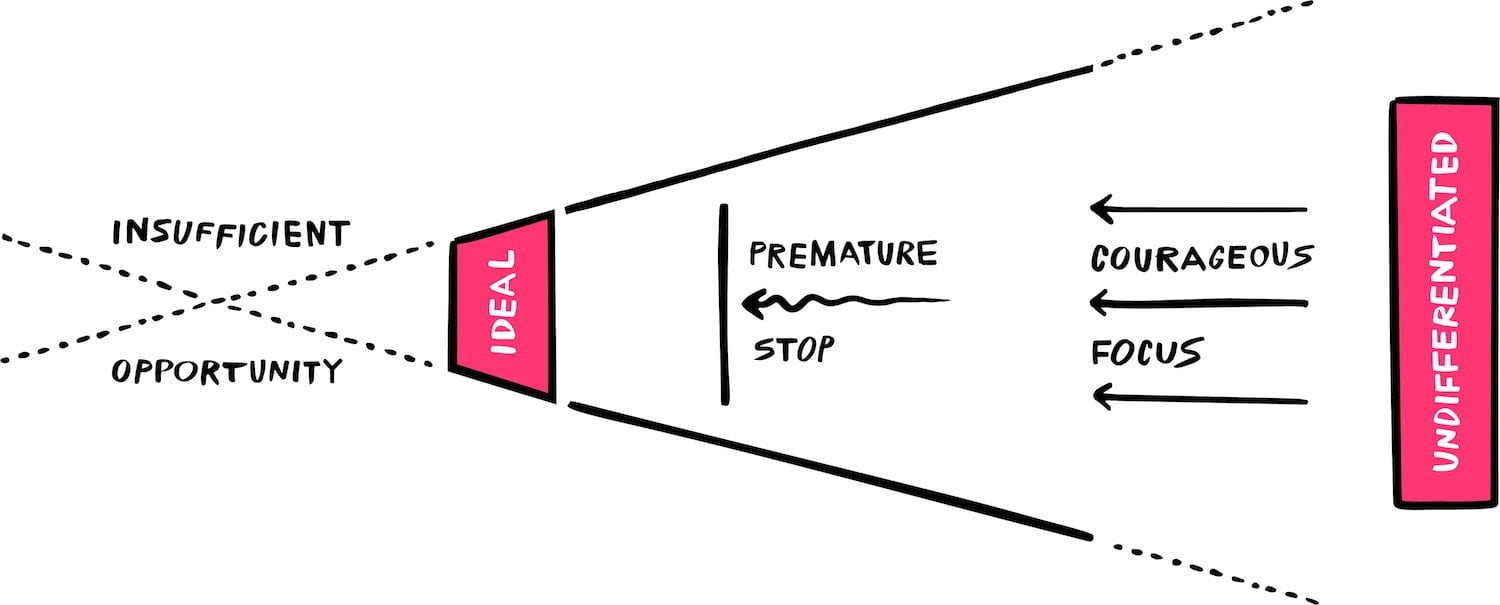
Your positioning centers on your organization’s reason for being.
Like your mom always told you, don’t try to be someone you aren’t. It might work for a bit. But long-term sustainability isn’t supported by opportunistic positioning. No amount of reinventing yourself will work if you aren’t capitalizing on what’s real and true for your organization. Luckily, developing positioning based upon a solid theory of change is where true differentiation magic can happen.
Your positioning centers on your organization’s core expertise.
You may believe your organization is uniquely differentiated from others because you do things to a better, more excellent degree. But author David C. Baker puts it best: “‘More, better’ is neither a strategy nor a positioning statement.”
He continues: “They might very well be true, but they are not uniquely true, and that’s a fundamental challenge of positioning: how to be less interchangeable or how to be uniquely true rather than just true. If you are claiming certain things are unique — the same things that your competition might be claiming — those things are not unique.”
Your programming might be holistic, your program deployment efficient, your immersion complete. But is that enough? You must find your core expertise. One that’s provable. One that’s fundamentally important. And on very rare occasions, a process or set of soft skills.
A good way to test this further is answering this question: “Could we write and publish a five-part blog series (with case studies) on our key expertise for the most significant publication in our industry?”
Would you have enough to say? Enough real-life examples to share? Could you stand out from the crowd, and get recognized for thought leadership? If not, then this positioning might yet be aspirational.
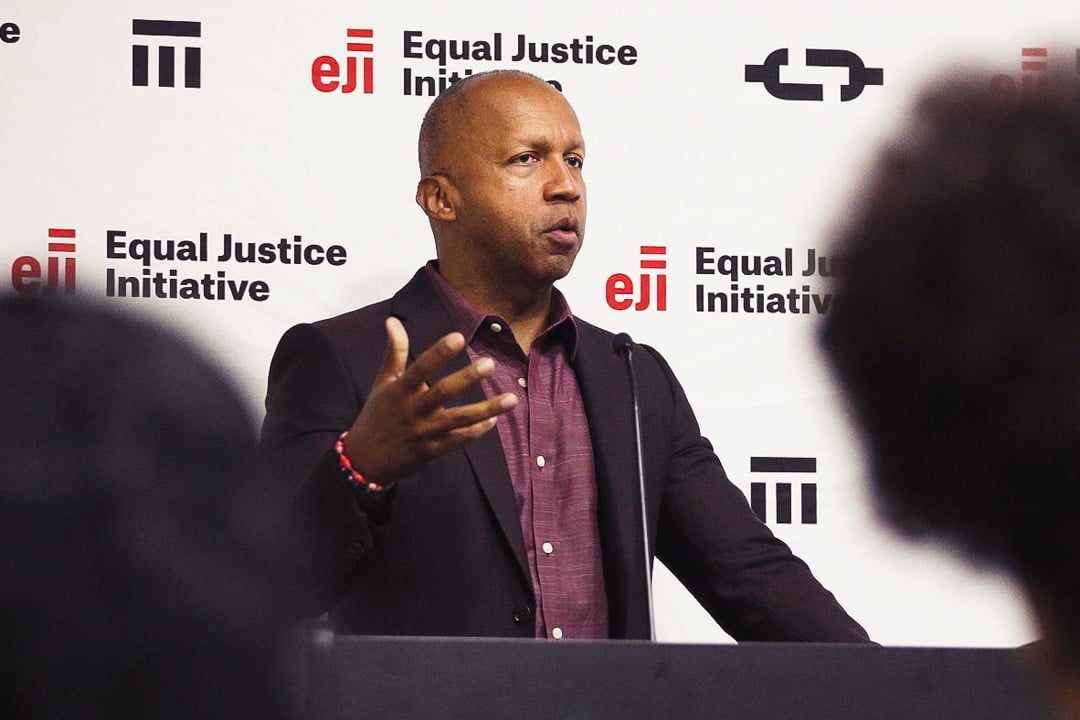
Bryan Stevenson founded the Equal Justice Initiative (EJI) as a nonprofit committed to ending mass incarceration in the U.S. And Bryan, while arguing cases in front of the Supreme Court and heading up the organization, is a prolific writer and speaker. He authored the critically acclaimed book Just Mercy, has delivered a TED Talk, and hits the speaking circuit to promote his mission and vision. Needless to say, the positioning of EJI as an organization wouldn’t be as strong without a founder demonstrating such expertise.
As a nonprofit, you’re in the business of making an impact. But unlike your counterparts in the for-profit space, you must deliver social change along with organizational viability and sustainability. All while executing the programs that seek to address social, political, or environmental issues. It’s because your work is crucial that you must find time to properly promote it. It’s not a diversion. It’s essential.
Without strategic positioning, your voice and important message will lose clarity and resonance. Drowned out by the cacophony.
Without strategic positioning, your most valuable asset — your team — will have their attention mitigated. Their priorities dulled.
Without strategic positioning, you may miss out on partnerships and collaborations. Weakening the very sector you wish to further.
And most importantly — without strategic positioning, the very work you do to better your world may not ever be fully realized.
Read more articles
Ready to get fundable and findable?
Learn how we can help maximize your funding.

